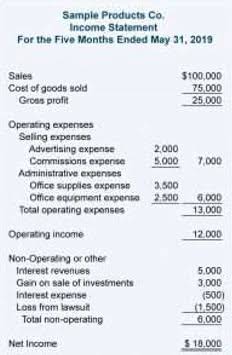
Once you have a grasp of the basics of opening balance equity, you will be https://www.bookstime.com/ able to correct it and reduce it to zero. If you’re unsure how to manage your journal entries, you can get in touch with an accountant to help you handle it. I also recommend getting in touch with an accounting professional for a personalized opinion. Every business is unique and they can make suggestions for handling those Opening Balances that are a perfect fit for your company.

Can I Consult an Accountant for Clearing the Opening Balance Equity Account?
- With this, I’d recommend double-checking your transactions by running the Balance Sheet report.
- And, not necessarily, everyone can go for a professional accountant who will not make a mistake which is again not guaranteed.
- It prevents it from showing up on a future reconciliation.
- It should be treated as the very first entry in your account books.
- Entering your opening balances is a necessary process that must be undertaken by anyone transitioning to QBO.
- If a balance reappears, it’s a signal that something wasn’t cleared properly and needs to be addressed.
That entry will show you a credit to the liability account and a debit to the Opening Balance Equity. Also, closing books ensures your financial data stays the way you want it to. It also prevents any accidental changes that could affect your financial reports. The opening balance equity account may be used to make adjustments to the financial records of the prior accounting period that include mistakes or conflicts.
Steps to Edit Opening Balance in QuickBooks
When they see a balance on an account they don’t even recall opening, it can confuse a lot of people. It’s mistaken for some individuals to disregard it because it’s simply designed to be a temporary account. Before we proceed, I recommend working with your accountant for additional guidance in deleting your account. This way, we can ensure your accounts are well accounted for after making these changes. If you’re not affiliated with one, you can visit our ProAdvisor page and we’ll help you find one from there. Opening Balance Equity, while useful in QuickBooks land, doesn’t have a place in real-world financial statements.

Take the stress out of your small business finances—subscribe to my newsletter for simple, actionable advice!
- Clearing the Opening Balance Equity account is not merely a technical task but an integral step in maintaining clean, accurate, and compliant financial records.
- Then, it should be successfully transferred to retain earning account.
- When you create a liability account and enter an opening balance, that amount will be recorded as a journal entry with Reconciled (R) status.
- The Accounting software program creates an opening balance account to offset opening balance transactions.
However, leaving a balance in this account long term is a sign that something needs attention. QB throws it in OBE when you create an account with a balance cause it do not know any better. The starting balance equity account is used to record the balance of equity accounts at the beginning of a new fiscal year or accounting period for a firm. When what is opening balance equity you added your bank account with QuickBooks for the first time, you can pick a day to start tracking your business transactions.
Transition to Retained Earnings
The opening balance equity should be closed out to retained earnings. If the Checking account goes up by $5000 (a debit), some other account must be affected by $5000 (a credit). Opening Balance Equity is designed to be used as a tool for creating opening balances in a QuickBooks new QuickBooks company file.
Starting of New Accounting Period
This is done after entering all of your other opening balances so that you can have exactly the right amount to balance your accounts. In QuickBooks, the opening balance equity account is listed as an equity account in the Chart of Accounts. When a new business file or fiscal year is formed, it is often generated automatically by the program. The account is identified as Opening Balance Equity and is situated in the Equity section of the Chart of Accounts. When you create a new account in QuickBooks Online, you pick a day to start tracking transactions and enter the balance for your real-life account for that day. Once done, move those incorrect entries to this new account.

We can only zero out the Opening Balance Equity if all accounts doesn’t have any beginning balance when they were created. Once the bank transactions are now downloaded into QBO successfully, here’s how you can review and categorize them. We look forward to having you here if you need more help completing the setup for a barter account inside QuickBooks, Denise. Feel free to drop by anytime, and we’ll be here to assist you.

Review transactions regularly

When you’re done, you can reconcile the account to correct the beginning balance. Enter a note in the Description field so you know what the journal entry is for. The issue of how to zero out the opening balance equity in QuickBooks is when you initially set up your firm and has a solution in opening balance equity in the QuickBooks. As an option, for the particular drop-down list of Sort By, choose Type. This option assembles the report by the transaction type which make analyzing transaction sources convenient. If your accounts still aren’t balanced, here’s how to fix opening balance issues.
Learn how to enter and manage an opening balance for bank, credit card, and other types of accounts. If the company has outstanding vendor or customer balances, these should be entered as of the start date of the new company file. The purpose of Opening Balance Equity is to ensure that the company’s books are balanced when they are first set up. Once your bank or credit card account is connected to QuickBooks, the system automatically downloads your bank transactions. If they’re not showing up or added on the Banking page, then you may need to do a manual update to refresh their connection.
